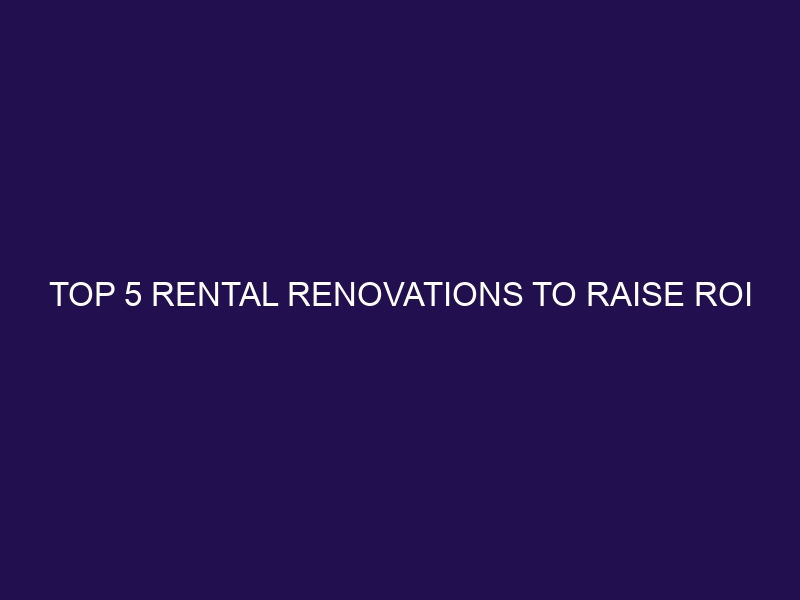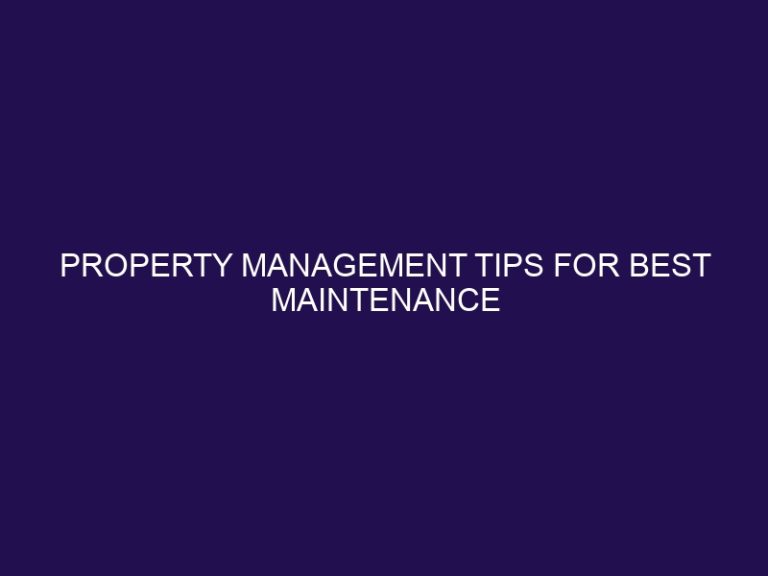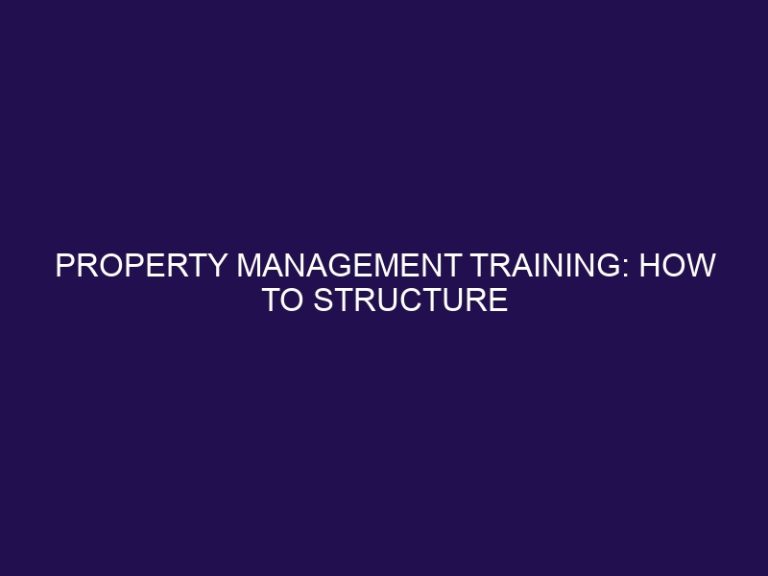Top 5 Rental Renovations to Raise ROI
With the increasing demand for rental properties, it has become essential for landlords to maximize their return on investment (ROI) through strategic renovations. However, before diving into rental renovations, there are several factors that need to be considered.
Budget planning is crucial as it helps determine the scope and feasibility of the renovations. Conducting market research is equally important to understand the rental market trends, tenant preferences, and rental rates in the area. conducting a thorough ROI analysis helps to evaluate the potential returns and benefits of each renovation project.
Once these factors are taken into account, it’s time to focus on the top 5 rental renovations that can maximize ROI. Kitchen upgrades have always been a popular choice as they significantly enhance the appeal and functionality of the rental property. Bathroom renovations also have a high impact, as modern and well-maintained bathrooms are highly desired by tenants.
Flooring replacement can transform the look and feel of the entire property, making it more attractive and easier to maintain. Interior paint and lighting upgrades can create an inviting and modern ambiance, increasing the perceived value of the rental unit. Lastly, curb appeal enhancements such as landscaping and exterior improvements can attract potential tenants and leave a positive first impression.
To ensure successful rental renovations, it is important to hire qualified contractors who specialize in rental property renovations. Keeping tenant preferences in mind during the renovation process can help cater to their needs and attract quality tenants. It’s crucial to follow local regulations and codes to ensure compliance with safety standards and avoid any legal issues.
By considering these factors and implementing the top 5 rental renovations, landlords can boost their ROI, attract quality tenants, and achieve long-term success in the rental market.
Factors to Consider Before Starting Rental Renovations
Before diving into rental renovations, it’s crucial to consider a few key factors that can greatly impact your return on investment. In this section, we’ll explore the essential aspects to take into account before embarking on your rental renovations journey. From budget planning to thorough market research and rigorous return on investment analysis, we’ll discuss how each of these components plays a vital role in ensuring the success and profitability of your rental property. So, let’s explore the groundwork required to maximize your ROI in the competitive rental market.
1. Budget Planning
Budget planning is an indispensable step when initiating rental renovations. It plays a crucial role in helping you stay organized, efficiently allocate funds, and maximize your return on investment. Here are some key steps to consider in your budget planning process:
- Assess your finances: It is important to determine the amount you can allocate for renovations while ensuring your financial stability.
- Conduct cost research: Obtain quotes from contractors and suppliers to estimate the expenses related to materials, labor, and any additional services required.
- Give priority to renovations: Identify the areas or aspects of the property that require immediate attention or have the potential to generate the highest return on investment.
- Create a contingency fund: Allocate extra funds to handle unforeseen expenses or emergencies that may arise during the renovation process.
- Keep track of expenses: Maintain a comprehensive record of all costs incurred during the renovations to ensure that you stay within your budget.
Effective budget planning is essential to ensure that your rental renovations are financially feasible and ultimately profitable in the long run.
2. Market Research
Market research is an essential step before commencing rental renovations. It enables landlords to gain insights into the current rental market and make well-informed decisions. Here are three crucial factors to consider during market research:
- Rental rates: It is vital to analyze the average rental rates in the specific area to determine a competitive yet profitable price for your property.
- Demand: Identifying the demand for rental properties in the location is crucial. This involves examining factors such as population, job market conditions, and housing trends.
- Tenant preferences: Researching the preferences and needs of potential tenants in the area is essential. This information helps prioritize renovations that will attract and retain tenants successfully.
By conducting comprehensive market research, landlords can align their renovations with market demand and maximize their return on investment.
Actual case: In 2020, a landlord in a suburban area conducted market research prior to renovating his rental property. The research revealed a high demand for family-friendly homes, with rental rates steadily increasing. Based on this information, the landlord decided to invest in upgrading the kitchen, installing modern appliances, and adding a stylish backsplash. The result of this strategic market research was highly favorable, as the landlord quickly found tenants willing to pay a premium price for the renovated property, resulting in increased rental returns.
3. Return on Investment Analysis
A return on investment (ROI) analysis is crucial before starting any rental renovation project. By conducting a thorough ROI analysis, landlords can make strategic decisions that will increase their rental property’s profitability.
Here is a breakdown of the factors to consider in a return on investment analysis:
| 1. Cost of Renovation | Calculate the total cost of the renovation project, including materials, labor, and any additional expenses. |
| 2. Expected Rental Increase | Estimate the potential increase in rental income after the renovation. Consider market trends and the demand for rental properties in the area. |
| 3. Payback Period | Determine how long it will take to recoup the initial investment through the increased monthly rental income. |
| 4. Property Value Appreciation | Analyze if the renovation will enhance the property’s value, leading to higher returns when selling in the future. |
| 5. Potential Tax Benefits | Consult with a tax professional to understand any tax deductions or credits that can offset renovation costs. |
By assessing the potential return on the money invested, landlords can make informed decisions about which renovations will maximize profits.
Top 5 Rental Renovations to Maximize ROI
Looking to maximize your return on investment (ROI) for rental properties? Look no further. In this section, we uncover the top 5 rental renovations that can exponentially increase your ROI. From kitchen upgrades to curb appeal enhancements, we’ll explore these renovation strategies that will attract tenants, boost property value, and ultimately, put more money in your pocket. So, let’s dive into the world of rental renovations and discover how to elevate your rental property to new heights of profitability.
1. Kitchen Upgrades
When it comes to rental renovations, kitchen upgrades are essential for attracting tenants and maximizing return on investment (ROI).
- Countertops: Installing high-quality countertops like granite or quartz can instantly elevate the aesthetics of the kitchen upgrades and leave a lasting impression.
- Cabinets: To enhance functionality and overall appeal, it is crucial to replace outdated cabinets with modern, functional ones as part of the kitchen upgrades.
- Appliances: As part of the kitchen upgrades, consider upgrading to energy-efficient appliances. Not only will this increase efficiency, but it will also appeal to environmentally conscious tenants.
- Lighting: Adequate lighting is important for a kitchen upgrades. Consider installing recessed lights or pendant lights to make the kitchen feel brighter and more inviting.
- Backsplash: As part of the kitchen upgrades, adding a stylish backsplash not only protects the walls but also adds elegance and personality to the kitchen.
2. Bathroom Renovations
When it comes to rental renovations, bathroom renovations can have a significant impact on the overall value and appeal of a rental property. Here are some key factors to consider:
- Functionality: Ensure that the bathroom renovations layout is optimized for practicality and convenience.
- Aesthetics: Update the bathroom renovations fixtures, tiles, and finishes to create a modern and visually pleasing space.
- Storage: Add ample storage options such as cabinets or shelves to maximize space and provide tenants with organizational solutions for their bathroom renovations.
- Energy Efficiency: Install water-saving fixtures, LED lighting, and energy-efficient appliances to reduce utility costs during the bathroom renovations.
Fun Fact: According to a report by the National Association of Realtors, bathroom renovations have a 60% recoup rate on investment.
3. Flooring Replacement
- Evaluate the existing flooring: Assess the condition and durability of the current flooring to determine if flooring replacement is necessary.
- Choose appropriate flooring material: Select a durable and cost-effective option that suits the rental property, such as laminate, vinyl, or carpet for the flooring replacement.
- Consider installation costs: Factor in the cost of professional installation or the time and effort required for DIY installation during the flooring replacement project.
- Calculate return on investment: Compare the cost of the flooring replacement to the potential increase in rental value or tenant retention.
- Plan the installation schedule: Coordinate with tenants to minimize disruption and ensure a smooth transition during the flooring replacement process.
By following these steps, landlords can enhance the aesthetics and functionality of their rental property through flooring replacement while maximizing their return on investment.
4. Interior Paint and Lighting
Interior paint and lighting are essential elements when it comes to renovating rental properties to enhance their overall appeal and value. When revamping the interior, it is crucial to take into account the following key considerations:
- Choosing neutral paint colors is recommended as they create a clean and inviting atmosphere.
- Ensuring proper lighting in every room is necessary to brighten up the space.
- Opting for energy-efficient lighting fixtures can significantly reduce utility costs.
- Considering the addition of dimmer switches allows tenants to adjust the lighting according to their preferences.
- Using LED bulbs not only ensures longevity but also helps save energy.
Investing in high-quality interior paint and lighting upgrades can completely transform the look and feel of a rental property. This, in turn, will attract potential tenants and maximize your return on investment.
5. Curb Appeal Enhancements
Enhancing curb appeal is crucial for attracting potential tenants and maximizing rental ROI. Here are some curb appeal enhancements, also known as “Curb Appeal Enhancements,” to consider:
Pro-tip: Don’t forget to regularly maintain these “Curb Appeal Enhancements” to ensure they continue to impress potential tenants.
Additional Tips for Successful Rental Renovations
Looking to maximize your return on investment with rental renovations? Look no further! This section delves into additional tips that will ensure your rental renovations are a resounding success. From hiring qualified contractors to keeping tenant preferences in mind and diligently following local regulations and codes, we’ve got you covered. Don’t miss out on these essential insights that will help you make the most of your rental property upgrades.
1. Hiring Qualified Contractors
When it comes to rental renovations, it is crucial to hire qualified contractors to ensure a successful project. Here are some valuable tips to keep in mind when selecting contractors:
- Experience: Look for contractors who have a proven track record in rental renovations.
- Licensing and Insurance: It is essential to verify that the contractors have the necessary licenses and insurance to protect both yourself and your property.
- Cost: Take the time to request detailed quotes from multiple contractors and compare their pricing and services to find the best fit for your budget.
- Communication: Make sure to choose contractors who are responsive, clear in their communication, and willing to collaborate with you throughout the entire process.
By following these guidelines, you can hire qualified contractors who will deliver high-quality work, ultimately saving you time and ensuring a successful rental renovation project.
2. Keeping Tenant Preferences in Mind
Keeping tenant preferences in mind is of utmost importance when embarking on rental renovations. By considering the needs and desires of potential tenants, landlords can effectively attract and retain high-quality renters. Here are some essential factors to remember:
- Layout and functionality: It is crucial to ensure that the renovated space meets the practical needs of the tenants, including adequate storage and functional appliances.
- Design aesthetic: It is important to take into account current design trends and preferences to create an visually appealing space that tenants will truly admire.
- Amenities and features: Landlords should carefully consider which amenities and features are important to the tenants, such as in-unit laundry, updated fixtures, or smart home technology.
- Location and neighborhood: Landlords should understand the preferences of the target tenant demographic and carry out renovations that align with the appeal of the neighborhood.
By giving priority to tenant preferences, landlords can develop rental spaces that truly stand out in the market and effectively attract long-term and satisfied renters.
3. Following Local Regulations and Codes
To ensure compliance and avoid potential legal issues, it is crucial to follow local regulations and codes when undertaking rental renovations. Research and understand the specific regulations and codes established by the local authorities to adhere to these requirements. Some key considerations include obtaining necessary permits, meeting safety standards, and complying with zoning laws. To navigate any complexities, it is advisable to hire qualified contractors who have a good understanding of local regulations. By adhering to local regulations and codes, landlords can guarantee the integrity and legality of their rental renovations, providing tenants with a safe and compliant living space.
Frequently Asked Questions
1. What are the top 5 rental renovations that can raise ROI?
The top 5 rental renovations that can raise ROI are kitchen upgrades, bathroom improvements, curb appeal enhancements, flooring care, and fresh paint.
2. How can strategic renovations increase the value for renters?
Strategic renovations can increase the value for renters by justifying higher monthly rates and attracting higher quality tenants. Upgrades can also increase the property’s resale value.
3. What are some examples of going green renovations that can boost a rental property’s ROI?
Examples of going green renovations that can boost a rental property’s ROI include installing energy-efficient replacements such as LED light bulbs and low-flow fixtures, implementing climate control features, and even adding solar panels.
4. How can property managers help with rental property renovations?
Property managers, such as M Property Group and MF Cashflow Property Management, can assist with rental property renovations by offering services like unit turnover cleaning, repairs, and 24/7 maintenance requests. They have extensive experience in property management and real estate services.
5. What is a good ROI range for rental properties?
A good ROI for rental properties is generally between 6% and 10% or higher. This percentage is calculated by dividing the net income by the total investment.
6. How can adding square footage to a rental property increase its ROI?
Adding square footage to a rental property, such as through basement or attic conversion, can increase its ROI by allowing for higher rental income. The additional space can attract higher paying tenants and boost the property’s revenue potential.







